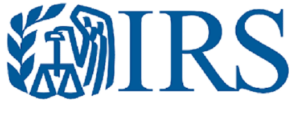IRS Announces 2018 Pension Plan Limitations; 401(k) Contribution Limit Increases to $18,500 for 2018


IR-2017-177, Oct. 19, 2017
WASHINGTON — The Internal Revenue Service today announced cost of living adjustments affecting dollar limitations for pension plans and other retirement-related items for tax year 2018. The IRS today issued technical guidance detailing these items in Notice 2017-64.
Highlights of Changes for 2018
The contribution limit for employees who participate in 401(k), 403(b), most 457 plans, and the federal government’s Thrift Savings Plan is increased from $18,000 to $18,500.
The income ranges for determining eligibility to make deductible contributions to traditional Individual Retirement Arrangements (IRAs), to contribute to Roth IRAs and to claim the saver’s credit all increased for 2018.
Taxpayers can deduct contributions to a traditional IRA if they meet certain conditions. If during the year either the taxpayer or their spouse was covered by a retirement plan at work, the deduction may be reduced, or phased out, until it is eliminated, depending on filing status and income. (If neither the taxpayer nor their spouse is covered by a retirement plan at work, the phase-outs of the deduction do not apply.) Here are the phase-out ranges for 2018:
- For single taxpayers covered by a workplace retirement plan, the phase-out range is $63,000 to $73,000, up from $62,000 to $72,000.
- For married couples filing jointly, where the spouse making the IRA contribution is covered by a workplace retirement plan, the phase-out range is $101,000 to $121,000, up from $99,000 to $119,000.
- For an IRA contributor who is not covered by a workplace retirement plan and is married to someone who is covered, the deduction is phased out if the couple’s income is between $189,000 and $199,000, up from $186,000 and $196,000.
- For a married individual filing a separate return who is covered by a workplace retirement plan, the phase-out range is not subject to an annual cost-of-living adjustment and remains $0 to $10,000.
The income phase-out range for taxpayers making contributions to a Roth IRA is $120,000 to $135,000 for singles and heads of household, up from $118,000 to $133,000. For married couples filing jointly, the income phase-out range is $189,000 to $199,000, up from $186,000 to $196,000. The phase-out range for a married individual filing a separate return who makes contributions to a Roth IRA is not subject to an annual cost-of-living adjustment and remains $0 to $10,000.
The income limit for the Saver’s Credit (also known as the Retirement Savings Contributions Credit) for low- and moderate-income workers is $63,000 for married couples filing jointly, up from $62,000; $47,250 for heads of household, up from $46,500; and $31,500 for singles and married individuals filing separately, up from $31,000.
Highlights of Limitations that Remain Unchanged from 2017
- The limit on annual contributions to an IRA remains unchanged at $5,500. The additional catch-up contribution limit for individuals aged 50 and over is not subject to an annual cost-of-living adjustment and remains $1,000.
- The catch-up contribution limit for employees aged 50 and over who participate in 401(k), 403(b), most 457 plans and the federal government’s Thrift Savings Plan remains unchanged at $6,000.
Detailed Description of Adjusted and Unchanged Limitations
For more information and details, please see the full article at IRS Announces 2018 Pension Plan Limitations; 401(k) Contribution Limit Increases to $18,500 for 2018
Simplify HR management today.
Simplify HR management today.
Navigating the Complexities of Healthcare Recruitment
The healthcare sector is renowned for its rewarding nature, offering professionals the chance to significantly impact individuals’ lives by aiding in their recovery from various ailments and conditions. However, for those tasked with recruitment within this sector, the challenges are plentiful. Delve into our in-depth guide for an array of strategies to elevate your healthcare…
Read MoreHow Improving Candidate Engagement Influences the Hiring Process
Applicants invest considerable time, effort, and thought into their job applications. Regrettably, it’s all too common for employers to delay responses, with some failing to provide any follow-up whatsoever. Such practices can have a negative effect on the candidate experience, influencing your organization’s hiring efficiency and reputation. Ensuring a positive experience for candidates is crucial…
Read More




